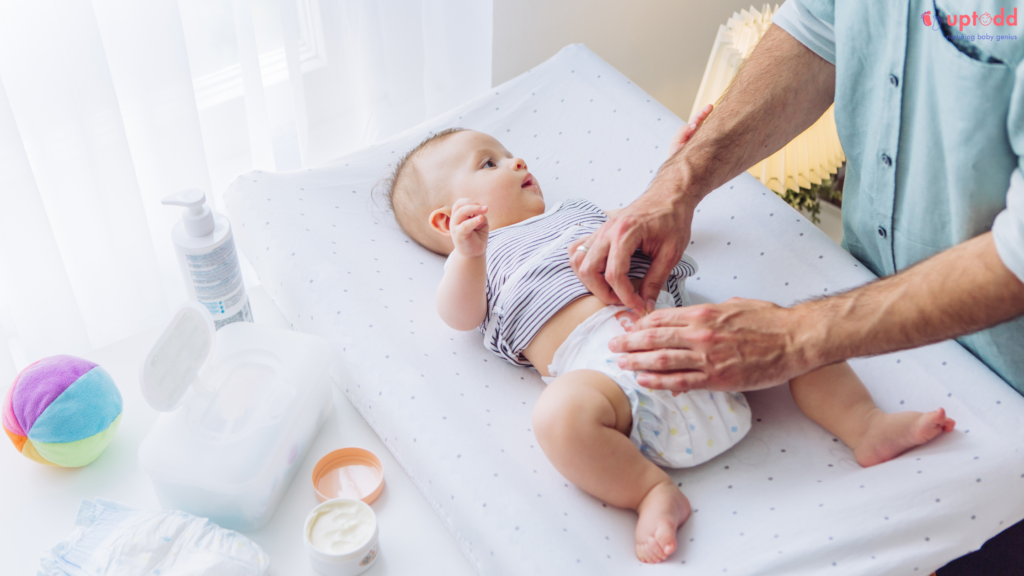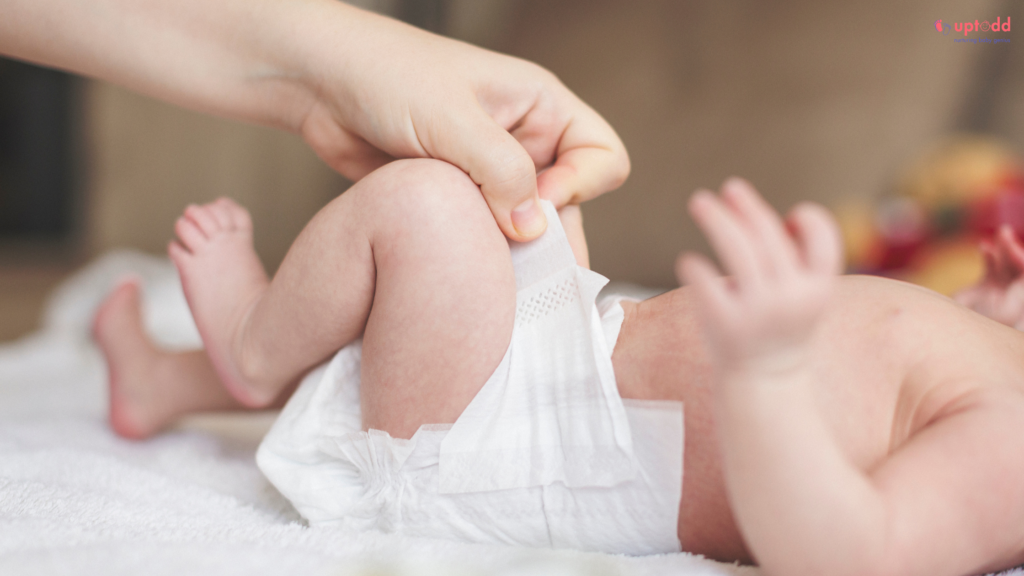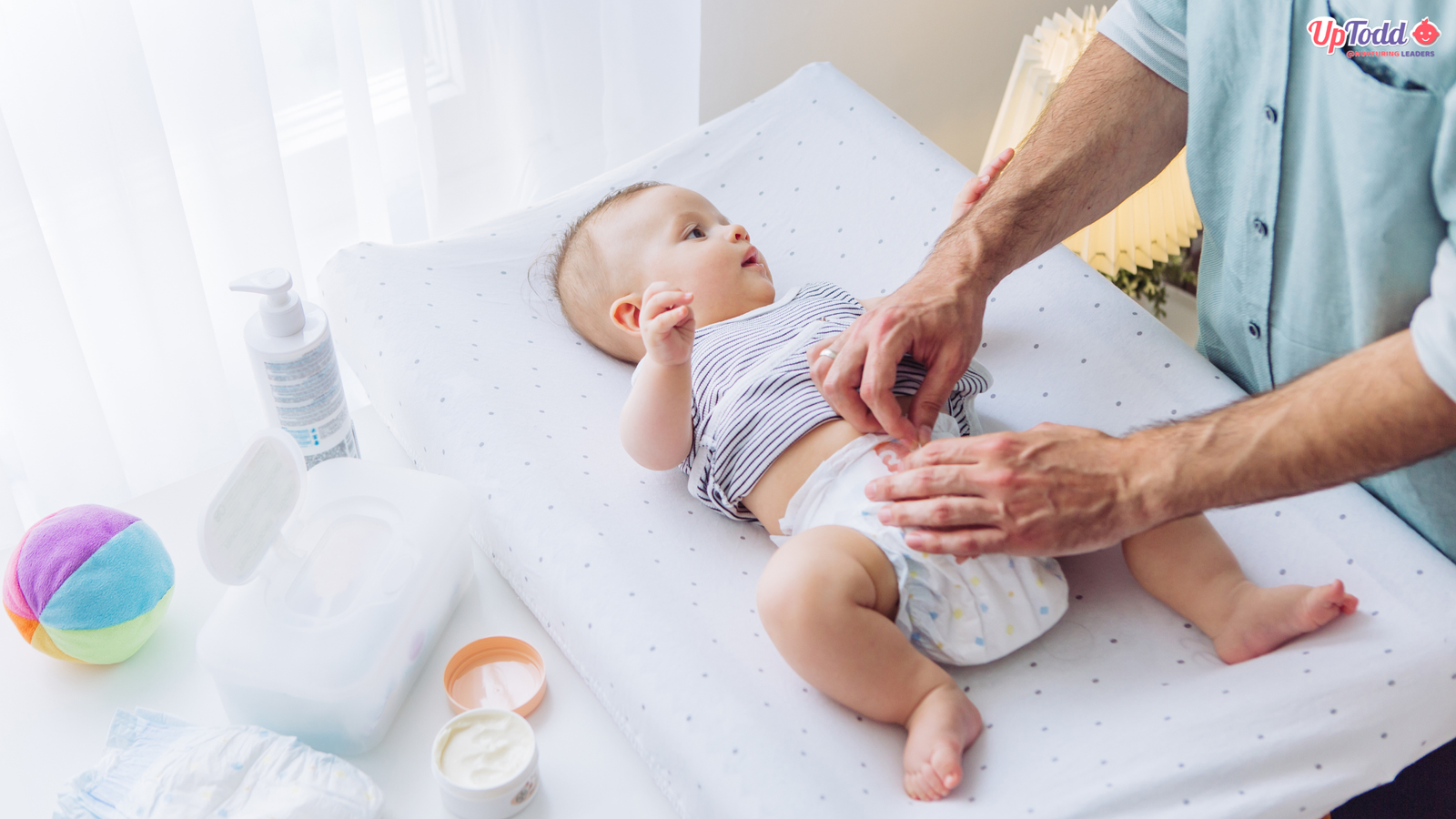
Baby’s Diaper Changing Guide?
Topic
Baby’s Diaper Changing Guide?
May start as early as
0 months
─────────
May end around
3-4 Years
As a parent, are you confused about the right time to give your baby a diaper change? You already know, diapers are one of the most essential (and most used!) items in your daily routine. Although a few questions linger in almost every parent’s mind:
How often should I really change my baby’s diaper?
Is there a magic number? Should you wake them up to change it at night? Does it differ with age or feeding patterns?
In this blog, we will cover:
– Why Frequency matters for a diaper change
– Diaper Changing guide (Age-wise)
– Diaper Change (Time Guide)
– Tips for comfort
– Diaper change essential checklist
Why Diaper Changing Frequency Matters
Changing your baby’s diaper regularly isn’t just about cleanliness; it’s about comfort, hygiene, and preventing health issues like diaper rash and infections.

Leaving a wet or soiled diaper on too long can lead to:
- Irritation and redness.
- Diaper rashes are due to prolonged exposure to moisture or ammonia.
- Urinary tract infections (especially in baby girls).
- Sleep disruptions due to discomfort.
Basically, understanding the right frequency for diaper changes is more than just a routine; it’s an essential part of baby care.
Diaper Changing Guide by Age
Let’s break it down by age group, since the frequency of urination and bowel movements evolves quickly in the first year.
| Baby’s Age (months) | Diaper Changes | Why | Tip |
| Newborns (0–1 Month) | 10–12 times a day | Newborns pee very often, almost every 1 to 3 hours. They may also poop after nearly every feeding. | Use super-absorbent or soft diapers to protect delicate newborn skin. Look for a wetness indicator line to reduce guesswork. |
| Infants (1–5 Months) | 8–10 times a day | Still urinating frequently, but bowel movements may reduce to 1–2 times a day (especially for breastfed babies). | If the diaper is only wet, many parents skip changing during sleep unless the baby is uncomfortable or prone to rash. Use an overnight diaper or a bamboo diaper for better dryness. |
| Babies (6–12 Months) | 6–8 times a day | Frequency slows slightly, but poop becomes more solid as solids are introduced. | As they start crawling or standing, ensure the diaper fits snugly to avoid leaks. |
| Babies (12–24 months) | ~4 Diapers a day (12-18 months) ~3–4 diapers/day (18-24 months) | As babies grow, their bladder capacity increases, so they pee less frequently but in larger volumes. | Use barrier cream if baby has frequent stools or sensitive skin. Transition to pull-ups once they show signs of readiness (e.g., staying dry for 2+ hours, communicating needs). Encourage diaper-free time to reduce risk of rashes. |
| Babies (2+ years) | ~2-3, then gradually decrease | Use pull-ups during the day to encourage potty independence. Watch for potty training signs (staying dry 2+ hrs, hiding to poop, showing interest). | Use barrier cream if baby has frequent stools or sensitive skin. Transition to pull-ups once they show signs of readiness (e.g., staying dry for 2+ hours, communicating needs). Encourage diaper-free time to reduce risk of rashes. |
When Should You Change – Time Guide for Diaper Change
Here’s a quick rule of thumb for when to change a diaper:
Immediately after a poop– Diaper Change
- Poop is acidic and can cause rashes quickly, especially in newborns.

Always clean thoroughly with warm water or gentle wipes and then pat dry, and apply a diaper cream if needed.
Every 2–3 hours if wet – Diaper Change
- For sensitive-skin babies, more frequent changes may be needed.
- However, if the diaper is “just wet,” moisture buildup can irritate the skin.
At night– Diaper Change
- If your baby is sleeping peacefully and the diaper is only slightly wet, no need to wake them; instead, you can use a bed protector waterproof mat.
- But if there’s a poop or signs of discomfort, then immediately change it.
Diaper Change and Diaper Tips for Better Comfort
To keep your baby happy and rash-free:
Use the Right Size
- Too tight means chafing. Too loose means leaks.
- Signs it’s time to size up: red marks on the waist or thighs, frequent leaks, or difficulty fastening.
Choose Breathable, Rash-Free Diapers
- Look for diapers made with natural materials like bamboo.
- Avoid those with harsh fragrances or lotions if your baby has sensitive skin.
Let Skin Breathe
- Give your baby some diaper-free time each day (even 10 minutes!)
- Helps air out the skin and prevent dampness-related rashes.
Diaper Change Essentials Checklist
Having these nearby can make changes smoother and more hygienic:

- Clean diapers (at least 2–3 extra)
- Unscented wipes or cotton + warm water
- Diaper rash cream
- Changing mat or a clean towel
- Diaper disposal bin
Pro tip: If you’re on the go, keep a well-stocked diaper bag with at least 2 spare diapers per hour you’re out.
Common FAQs from Parents
Do I need to change the diaper every time my baby pees?
Not necessarily after every drop, but try to change every 2–3 hours during the day to keep the area dry.
Should I wake my baby at night to change a wet diaper?
If the diaper is only wet and your baby is sleeping comfortably, then no need to wake your baby. Use overnight or super-absorbent diapers before bedtime.
My baby gets frequent diaper rashes. Should I change more often?
Yes! Babies with sensitive skin may need more frequent changes, and switching to a chemical-free, breathable diaper can help significantly.
What About Eco-Friendly or Reusable Diapers?
If you’re using cloth or reusable diapers, they need to be changed more frequently, usually every 1.5 to 2 hours or immediately after a poop.
Remember to:
- Use liners to help with poop cleanup
- Wash properly to avoid build-up and odor
- Rotate 10–12 cloth diapers per day for newborns
Conclusion-
There’s No “Perfect Number” Only Attentive Parenting
Every baby is unique; some pee more, some poop less, and others hate feeling even slightly wet.
So while guidelines help, the real key is: Stay attentive, stay flexible, and trust your instinct.
Explore UpTodd to get right parenting support from best experts
Research & Resources
Brandon, D. H., Hatch, D., Barnes, A., Vance, A. J., Harney, J., Voigtman, B., & Younge, N. (2022). Impact of diaper change frequency on preterm infants’ vital sign stability and skin health: A RCT. Early human development, 164, 105510. https://doi.org/10.1016/j.earlhumdev.2021.105510
Wesner, E., Vassantachart, J. M., & Jacob, S. E. (2019). Art of prevention: The importance of proper diapering practices. International journal of women’s dermatology, 5(4), 233–234. https://doi.org/10.1016/j.ijwd.2019.02.005
View More References ▼



